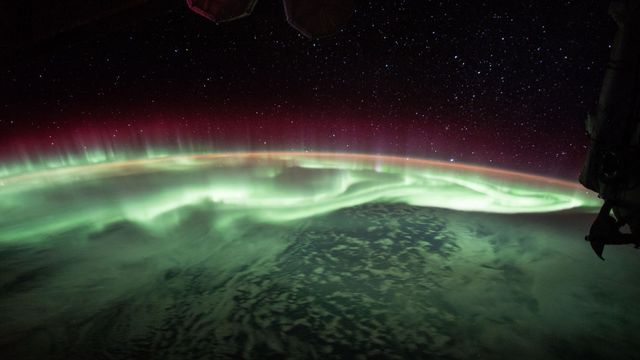Solar flare could make aurora visible into Virginia and North Carolina on Saturday night
The best viewing will be under the darkest skies. Look to the northern horizon between around 8 to 11 pm.
Posted — UpdatedThis is forecasted to bring higher auroral activity deeper into the continental United States.
As those charged particles arrive, they will follow the magnetic lines of the magnetosphere, which surrounds the Earth like a doughnut, funneling that energy down at the poles. The stronger the solar storm, the deeper those charged particles make their way into that doughnut, the more likely those in lower latitudes, like here in Raleigh, are to see aurora.
While it takes sunlight about 500 seconds to reach Earth, CMEs travel much slower, taking several days to arrive. Observations from NASA's Solar Terrestrial Relations Observatory (STEREO) show this CME is traveling at about 800 km/sec which would put its arrival late Saturday night into Sunday morning.
Aurora activity is to be most visible from the Pacific Northwest, across the Upper Midwest, through New York and New England, visible low on the horizon as far south as Northern California, Oklahoma, Tennessee and North Carolina.
Look to the north about an hour after sunset for a green glow near the horizon. With partly to mostly cloudy skies in our forecast, you will likely be looking through breaks in the clouds, so be patient.
The darker your skies, the better your chances of seeing the aurora. Areas to the north of sources of light pollution like Rocky Mount, Roanoke Rapids, and cities across the triangle are in better positions.
What to expect
We are probably not going to see the beautiful ribbons of red and green (oxygen molecules) or blue and pink (nitrogen molecules) you may have seen in photos. At least a very strong G5 solar storm is needed to produce significant auroral activity in our skies. But G3 storms have produced a noticeable green hue to the northern skies in the past.
What we'll see here is those charged particles interacting with air molecules high in the upper atmosphere further to our north.
We'll know more about what to expect and when on Saturday afternoon as the CME reaches instruments aboard NOAA's Deep Space Climate Observatory (DSCOVR) positioned between the Earth and Sun, another 4 Earth-Moon distances beyond the Moon.
Related Topics
• Credits
Copyright 2024 by Capitol Broadcasting Company. All rights reserved. This material may not be published, broadcast, rewritten or redistributed.






